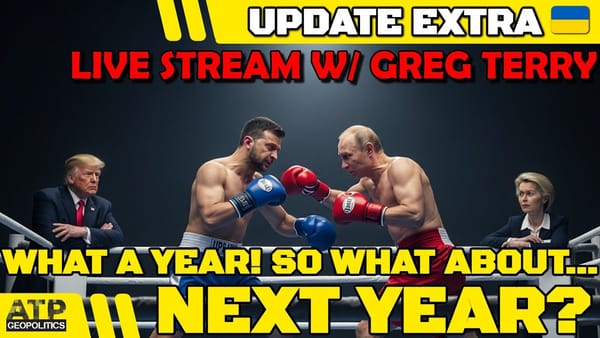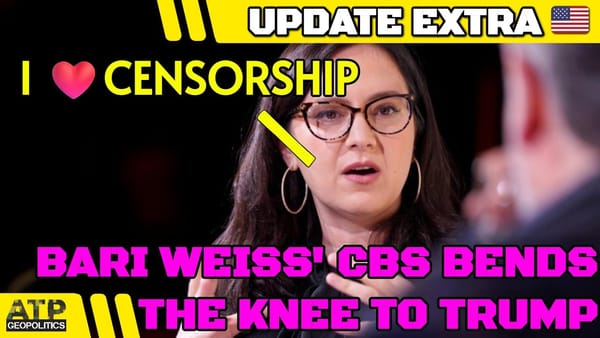Ukraine War Upd. EXTRA: Russian Loss Stats, Feb 2022-May 2024
Table of Contents 📖
"I think the statistics [...] if these are accurate statistics but again it's it's trends and you join it up with the stockpiles and the visually confirmed losses etc etc so these statistics are correct then Russia are in trouble and long term on a long-term basis they are going to have to be relying more and more on infantrymen to make those games"
Hello Team
🎦 00:00-01:12⏩
Jonathan welcomes viewers to an "extra nuggets and tidbits" video which will look at Russian losses over the course of the war. He'll be analysing data from the Ukrainian General Staff with a focus on trends and patterns. This data can be found on his OneDrive which is linked in the video description. He'll also be looking at data from a spreadsheet maintained by community member "Dell" (who he is very grateful to).
Return to top⤴️
Russian Personnel Losses
🎦 01:12-07:34⏩
Jonathan explains that whilst the Ukrainian General Staff figures may not be totally accurate (due to potential propaganda/inaccuracies), if they are inaccurate, they are consistently inaccurate. This is important because it still allows for the identification of trends. Analysing the data visually, the steeper the trendline the greater the losses. Key observations about Russian personnel losses:
- Losses are highest when Russia is on the offensive.
- October 2023 saw a sharp increase in losses during the Avdiivka offensive.
- Losses dipped in April 2024 which may correlate with Ukraine's lack of ammunition/supplies at the time.
- Late April/Early May 2024 - Losses are back to the highs of the Avdiivka offensive. This is likely due to Western military aid becoming available.
Russian Tank Losses
🎦 07:34-11:18⏩
Jonathan's analysis of Russian Tank Losses:
- High losses at the start of the war (Feb 22)
- Losses stabilised until the Kharkiv & Kherson counter offensives in Aug-Nov 2022.
- Losses dipped again during the Ukrainian counteroffensive (as Ukraine was on the offensive, Russia on the defensive).
- October 2023: Losses increased again, peaking during the Avdiivka offensive.
- Losses have remained consistently high since October 2023.
- Jonathan believes Russia may be running out of tanks. This is evidenced by footage showing small Russian armoured columns, and in some cases single tanks being used in attacks, supported by infantry.
Russian Armoured Personnel Vehicle (APV)/Infantry Fighting Vehicle (IFV) Losses
🎦 11:18-13:47⏩
Jonathan explains that this category includes Infantry Fighting Vehicles, Mine Resistant Ambush Protected (MRAP) vehicles and Armoured Personnel Carriers (APCs). His analysis shows:
- Losses followed a similar trend to Tanks.
- Beginning of the War (Feb 22): High Losses
- Losses dipped, then rose again during the Kharkiv & Kherson counter offensives in Aug-Nov 2022.
- Losses dipped again during the Ukrainian counteroffensive (as Ukraine was on the offensive, Russia on the defensive).
- October 2023: Sharp increase in losses during the Avdiivka offensive.
- Losses have started to decline which could be an early indication that Russia is running short of these vehicles.
- Jonathan explains that the scale of the Y axis is different for the APV/IFV data - the losses, whilst looking lower on the graph, are actually higher than for tanks.
Russian Vehicles & Fuel Tank Losses
🎦 13:47-14:12⏩
Jonathan notes that there has been a recent sharp uptick in Russian vehicle & fuel tank losses. This is significant and he wonders if Dell's data includes the "Desert Cross 1003" - a type of golf cart being used by Russian forces. Jonathan believes that the use of such vehicles (which aren't ideally suited) are a further indication that Russia is running out of suitable vehicles.
Return to top⤴️
Russian Artillery Losses
🎦 15:18-20:46⏩
This data tells a significant story according to Jonathan. Key observations:
- Artillery losses remained low even during the Ukrainian counteroffensive.
- Losses started to increase during the counteroffensive as Ukraine adapted its tactics to focus on taking out Russian artillery.
- Since then, artillery losses have been consistently high with very few exceptions.
- This is evidenced by the increasing use of old towed artillery pieces (D30s and D20s) by Russia, as seen in visually confirmed loss data, and the depletion of stockpiles in Russia. Jonathan reasons that Russia wouldn't use this equipment unless they had no other choice, and that this is further evidence of their increasing materiel shortages. He believes that this bodes well for Ukraine.
Russian Multiple Launch Rocket System (MLRS) Losses
🎦 20:46-21:32⏩
The data for this category is patchy as the volume of MLRS systems is much lower than other categories e.g. artillery. It does show consistent losses, but it's hard to draw any real conclusions about the data.
Return to top⤴️
Russian Air Defence System Losses
🎦 21:32-22:58⏩
Jonathan explains that Russian air defence losses have followed a similar pattern to artillery, with losses remaining low until the middle of the Ukrainian counteroffensive when Ukraine started to specifically target air defence. Since then, losses have been consistent and this is likely to continue as Ukraine prepares for the arrival of F16 fighter jets. Ukraine needs to degrade Russian air defences to maximise the effectiveness of these jets.
Return to top⤴️
Russian Aircraft Losses
🎦 22:58-24:13⏩
The data is not consistent enough to draw any real conclusions, however it does show periods where losses were higher e.g. early March 2023 where Russia lost a number of aircraft including several A50s. Jonathan explains that aircraft losses are harder to verify, particularly those shot down far from the front lines, over the sea, or behind Russian lines.
Return to top⤴️
Russian Helicopter Losses
🎦 24:13-24:42⏩
The data for Russian helicopter losses tells a similar story to aircraft. There was a spike in losses around the time that the Berdyansk airbase was hit, although the number of helicopters lost according to the data is lower than that claimed at the time.
Return to top⤴️
Russian Drone & Cruise Missile Losses
🎦 24:42-27:05⏩
Jonathan's analysis of the data shows:
- Russia is making heavy use of drones, in particular Shahed drones.
- Russia is now producing these drones domestically.
- Cruise missile use has dropped significantly since the start of the war and Jonathan believes this is because they are now firing them at the rate they are being produced. It's unclear whether Russia has been able to source cruise missiles from other countries, such as Iran.
Russian Warship & Boat Losses
🎦 27:12-28:08⏩
Data is not consistent enough to draw firm conclusions other than that Russia adapted its tactics after early losses. Jonathan highlights the loss of the Moskva and other ships. Russian ships were initially stationed near Crimea and were moved further away from Ukraine, before being moved to Novorossiysk. He speculates that this is due to the increasing range of Ukrainian missiles.
Return to top⤴️
Russian Vehicle & Fuel Tank Losses ( revisited)
🎦 28:08-32:23⏩
The data shows high losses at the beginning of the war, which Jonathan attributes to the destruction of Russian fuel trucks that got stuck in the mud. He refers to Russia as a "railway army" that was unprepared for a protracted war and was forced to rely on its inferior truck fleet for logistics after Ukrainian forces destroyed rail lines. The destruction of these trucks early in the war is likely why we don't see as many Russian fuel trucks destroyed now. Losses in this category are increasing again, which Jonathan attributes to Russia's increasing use of civilian vehicles such as SUVs, vans and even golf carts due to a shortage of military trucks. These vehicles are particularly vulnerable to drone attacks.
Return to top⤴️
Russian Special Equipment Losses
🎦 32:23-33:33⏩
Jonathan explains that this category includes a wide range of equipment including engineering vehicles, armoured recovery vehicles, communications equipment and likely even Starlink satellite internet equipment. He believes losses in this category are increasing as Ukrainian forces use FPV drones to destroy them. He believes there's a correlation between FPV drone use and the loss of Russian equipment.
Return to top⤴️
Russian Drone & Missile Losses ( revisited)
🎦 33:44-34:15⏩
Jonathan revisits Dell's data analysis which combines drone and cruise missiles. The data shows that missile use has declined, and that cruise missiles have, to some extent, been replaced by drones. Jonathan speculates that this may be because Russia has better access to drones than cruise missiles.
Return to top⤴️
Dell's Data Analysis
🎦 34:15-35:05⏩
Jonathan highlights how useful Dell's data analysis is for understanding the cost of various offensives. Dell has calculated the costs for the Bakhmut, Avdiivka and Ocheretina battles. Jonathan plans to cover this in more detail in a future video.
Return to top⤴️
Wrap up
🎦 35:05-37:31⏩
Jonathan thanks Dell for his work, encourages viewers to check out Dell's data and thanks viewers for watching. He also highlights another dashboard that tracks the average daily Russian equipment losses and compares this with the previous days losses. He's observed that the average daily losses have increased in recent months.
Return to top⤴️



